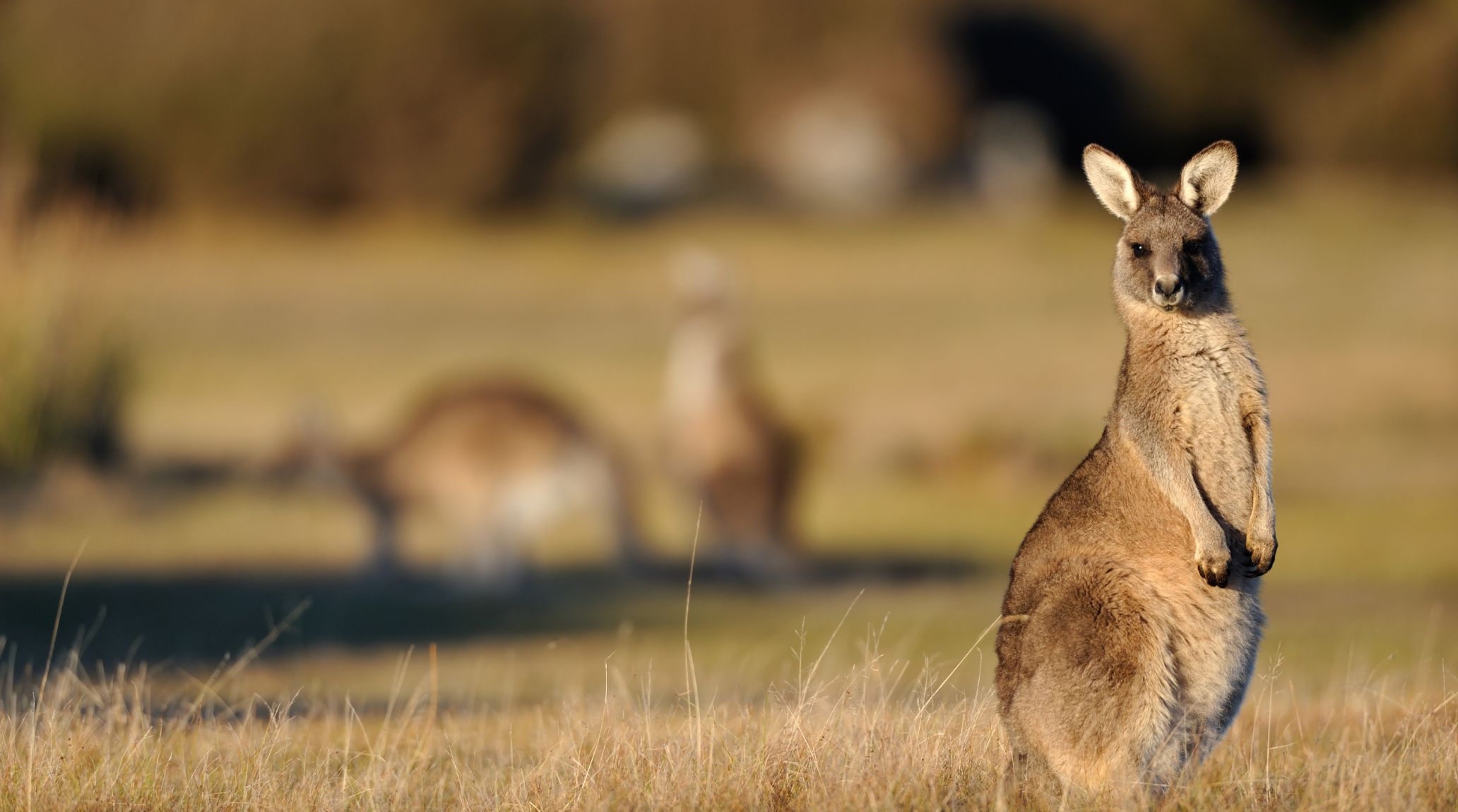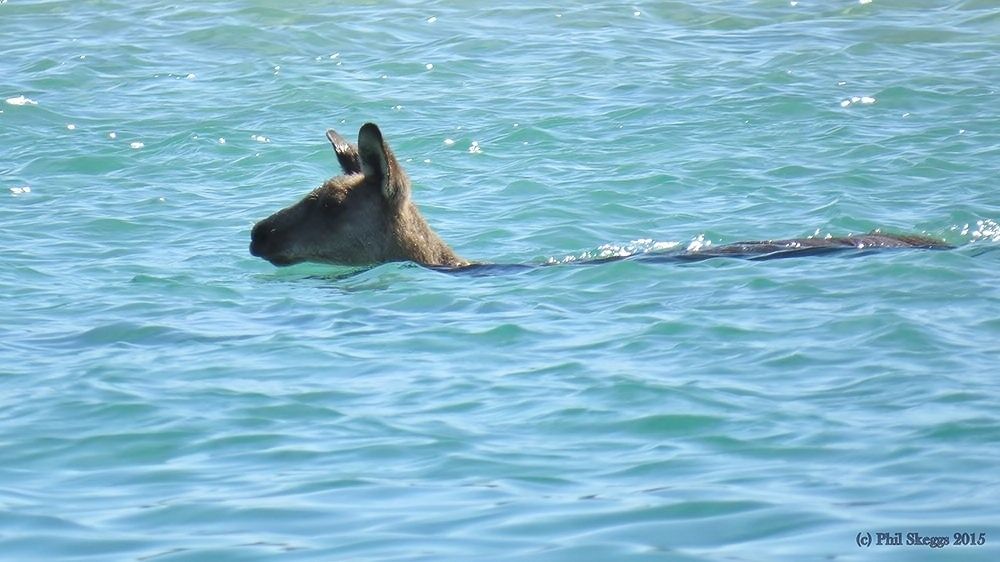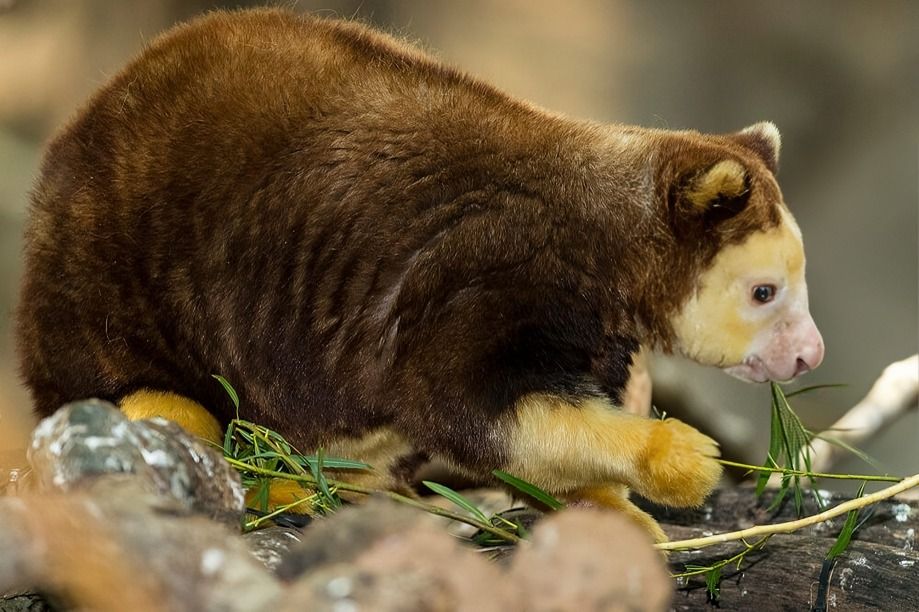
“
In this blog, we delve into 20 intriguing facts about kangaroos that highlight their unique adaptations, behaviors, and importance in Australian wildlife. From their distinctive hopping ability to their role in shaping ecosystems, kangaroos captivate the imagination with their remarkable features. Whether you're a wildlife enthusiast or simply curious about these marsupials, join us as we uncover the secrets of kangaroos and celebrate their place in the natural world.1
1
”
Kangaroo joeys are born extremely underdeveloped, about the size of a lima bean. They instinctively crawl into their mother's pouch, where they continue to develop. Joeys spend several months in the pouch, gradually growing until they are ready to venture out.1
During mating season, male kangaroos compete for the attention of females by displaying their strength and dominance through behaviors like boxing and vocalizations. Females choose their mates based on these displays of fitness and health.2
There are several types of kangaroos, including the iconic red kangaroo, the eastern grey kangaroo, and the smaller wallabies. Each species has adapted to different habitats across Australia, from arid deserts to coastal forests, showcasing their remarkable diversity.3
Kangaroos are herbivores that mainly feed on grasses, leaves, and shrubs. Their grazing habits play a crucial role in shaping the landscape by controlling vegetation growth and dispersing seeds, making them important contributors to their ecosystems.4
Kangaroo pregnancies last about 30 to 36 days, resulting in the birth of a tiny, underdeveloped joey. The newborn then climbs into the mother's pouch, where it continues to develop and grow for several months before venturing outside.5
Kangaroos can live up to 6 to 8 years in the wild, though some individuals have been known to reach 20 years in captivity. Their lifespan is influenced by factors such as predation, food availability, and environmental conditions. 6

While kangaroos typically avoid water, they can swim if necessary. They use their powerful hind legs to paddle, keeping their heads above water. However, they are not known for their swimming abilities and prefer to stay on dry land whenever possible.
If danger strikes, joeys quickly dive headfirst into their mother’s pouch. Despite their clumsiness, they can somersault into the pouch at high speed to seek safety, and a few wriggles will set them right-side-up again.7
Kangaroos live in groups called mobs or troops, which consist of females, their offspring, and a dominant male. These social structures help protect individuals from predators and provide opportunities for social interaction and grooming.8
Kangaroos communicate with each other through various vocalizations, including grunts, clicks, and hisses. They also use body language, such as ear movements and tail positions, to convey messages within their group.9
Female kangaroos have a remarkable ability called embryonic diapause, where they can delay the development of a fertilized egg until environmental conditions are favorable. This adaptation ensures the survival of their offspring during times of food scarcity or drought.10
Some species of kangaroos, particularly smaller wallabies and tree kangaroos, are threatened by habitat loss, predation, and human activities. Conservation efforts aim to protect these unique marsupials and their habitats across Australia.11
Many kangaroo species are nocturnal, choosing to be active during the cooler night hours. This behavior helps them avoid the intense daytime heat of the Australian outback, conserving energy and reducing water loss while foraging and socializing.12
As herbivores, kangaroos play a vital role in maintaining healthy ecosystems by controlling plant growth and contributing to nutrient cycling. Their grazing habits influence the composition of vegetation and help prevent overgrowth in certain habitats.13
Kangaroos have evolved to thrive in arid environments by efficiently conserving water. Their bodies are adapted to minimize water loss, allowing them to survive on minimal hydration and endure the harsh conditions of the Australian outback.14

Unlike most kangaroos, tree kangaroos live in the rainforest canopy. They are adapted for climbing, with a long tail and strong limbs that help them leap between branches. These unique kangaroos spend their lives high up in the trees.
Kangaroos can leap up to 3 meters high, showcasing their remarkable jumping ability. This impressive skill makes them excellent escape artists, allowing them to swiftly evade predators and navigate their environment with agility and ease.15
The male red kangaroo from Australia can stand up to 1.8 meters tall and reach a total length of 2.85 meters, including its tail. Exceptional individuals can weigh up to 90 kilograms.16
The kangaroo's tail serves multiple functions beyond balance. It acts as a powerful fifth limb, supporting the kangaroo's weight when standing still and providing leverage during rapid turns or pivots.17
The fastest recorded marsupial is the eastern grey kangaroo, reaching 64 km/h (40 mph). The highest sustained speed was 56 km/h (35 mph) by a large male red kangaroo, which sadly died from the exertion after running 1.6 km (1 mile).18


